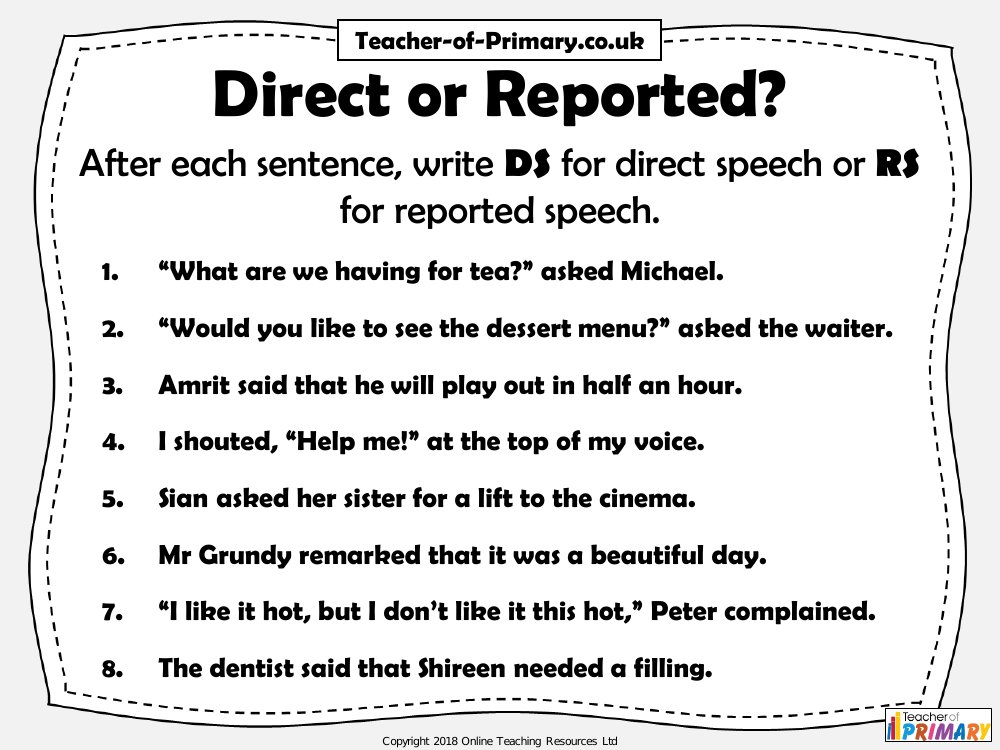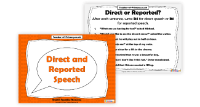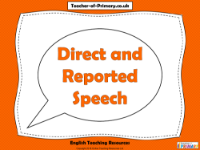Direct and Reported Speech - Worksheet

English Resource Description
The provided worksheet is a resource designed to help students understand the difference between direct and reported speech. In the first section, students are given various sentences and must identify whether each sentence is an example of direct speech (DS) or reported speech (RS) by writing the corresponding abbreviation after each sentence. For example, direct speech is typically enclosed in quotation marks and represents the exact words spoken by a character, such as “What are we having for tea?” asked Michael. Reported speech, on the other hand, paraphrases what was said and often involves a reporting verb, like in Amrit said that he will play out in half an hour.
In the second section, students are tasked with converting sentences from direct speech into reported speech. This exercise requires them to transform statements like “What did you do over the holidays?” asked Nat into a reported speech format, which would be Nat asked what they had done over the holidays. The worksheet encourages the practice of changing pronouns, tense, and other elements of the sentence to accurately convey the original meaning without using direct quotations. This type of activity is valuable for enhancing students' grammatical skills and their ability to distinguish between different forms of narration.


